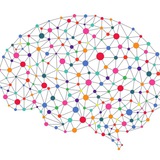What Kagglers are mostly using for Text Classification?
👍1
imractical python.jpg
95.2 KB
Impractical PythonProjects by Lee Vaughan 2018
Github repository:
https://github.com/rlvaugh/Impractical_Python_Projects
https://github.com/rlvaugh/Impractical_Python_Projects
GitHub
GitHub - rlvaugh/Impractical_Python_Projects: Code & supporting files for chapters in book
Code & supporting files for chapters in book. Contribute to rlvaugh/Impractical_Python_Projects development by creating an account on GitHub.
Deep Learning Drizzle
Drench yourself in Deep Learning, Reinforcement Learning, Machine Learning, Computer Vision, and NLP by learning from these selected and exciting lectures!!
GitHub by Marimuthu Kalimuthu
Drench yourself in Deep Learning, Reinforcement Learning, Machine Learning, Computer Vision, and NLP by learning from these selected and exciting lectures!!
GitHub by Marimuthu Kalimuthu
You are deep learning enthusiast and Covolutions are unseperable part of your projects. In this tutorial given comprehensive guideline all about convolutions:
-> Convolution v.s. Cross-correlation
-> Convolution in Deep Learning (single channel version, multi-channel version)
-> 3D Convolution
-> 1 x 1 Convolution
-> Convolution Arithmetic
-> Transposed Convolution (Deconvolution, checkerboard artifacts)
-> Dilated Convolution (Atrous Convolution)
-> Separable Convolution (Spatially Separable Convolution, Depthwise Convolution)
-> Flattened Convolution
-> Grouped Convolution
-> Shuffled Grouped Convolution
-> Pointwise Grouped Convolution
-> Convolution v.s. Cross-correlation
-> Convolution in Deep Learning (single channel version, multi-channel version)
-> 3D Convolution
-> 1 x 1 Convolution
-> Convolution Arithmetic
-> Transposed Convolution (Deconvolution, checkerboard artifacts)
-> Dilated Convolution (Atrous Convolution)
-> Separable Convolution (Spatially Separable Convolution, Depthwise Convolution)
-> Flattened Convolution
-> Grouped Convolution
-> Shuffled Grouped Convolution
-> Pointwise Grouped Convolution
Computer Vision news magazine RSIP vision. February 2019. CV Application, Challenges, Projects
👍1
Introduction to Deep learning with flavor of Natural Language Processing(NLP)
Course (Tokyo Institue of Technology) materials, demos and implementations are available. Enjoy with DL. Happy learning
Course (Tokyo Institue of Technology) materials, demos and implementations are available. Enjoy with DL. Happy learning
Main site:
https://chokkan.github.io/deeplearning/
Github repo:
https://github.com/chokkan/deeplearning
https://chokkan.github.io/deeplearning/
Github repo:
https://github.com/chokkan/deeplearning
GitHub
GitHub - chokkan/deeplearning: ART.T458: "Machine Learning" in Tokyo Institute of Technology
ART.T458: "Machine Learning" in Tokyo Institute of Technology - GitHub - chokkan/deeplearning: ART.T458: "Machine Learning" in Tokyo Institute of Technology
Watson Studio Desktop is now free for academia. All products in your charge for free:
* Watson Studio Cloud
* Watson Studio Local
* Watson studio Desktop
Just visit, register as a student or faculty, varify your account, install and enjoy with service.
You'll get detailed information in below medium link
* Watson Studio Cloud
* Watson Studio Local
* Watson studio Desktop
Just visit, register as a student or faculty, varify your account, install and enjoy with service.
You'll get detailed information in below medium link
👍1
Next decade of technologies and fields by interpretation of Business insider:
1 #AI
2 #IoT⌚️
3 #blockchain ⛓
4 3D print 🖨
5 mobile📱
6 autonomous cars 🚗
7 mobile internet 💻
8 robotics🤖
9 VR/AR 👓
10 wireless power🔌
11 quantum computing 🖥
12 5G 📡
13 voice assistant🎙
14 cybersecurity🔒 #MWC19
Video is credited from Tech Insider 👇
1 #AI
2 #IoT⌚️
3 #blockchain ⛓
4 3D print 🖨
5 mobile📱
6 autonomous cars 🚗
7 mobile internet 💻
8 robotics🤖
9 VR/AR 👓
10 wireless power🔌
11 quantum computing 🖥
12 5G 📡
13 voice assistant🎙
14 cybersecurity🔒 #MWC19
Video is credited from Tech Insider 👇
👍1
Natural Language Processing Tutorial for Deep Learning Researchers using Tensorflow and Pytorch
Most of the models in NLP were implemented with less than 100 lines of code.(except comments or blank lines)
Most of the models in NLP were implemented with less than 100 lines of code.(except comments or blank lines)
